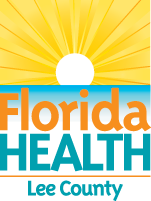It's a New Day in Public Health.
The Florida Department of Health works to protect, promote, and improve the health of all people in Florida through integrated state, county, and community efforts.
Through with Chew Week Lee
February 15, 2016
Lee County, Fla. – Tobacco-Free Lee and the Florida Department of Health’s Bureau of Tobacco Free Florida are raising awareness about the dangers of smokeless tobacco, like chew and dip, during “Through With Chew Week.” This public awareness campaign was created to reduce the use of smokeless tobacco among young people and help combat this deadly addiction. “Through With Chew Week” takes place Feb. 14-20.
To raise awareness about the dangers of smokeless tobacco use, Lee County Students Working Against Tobacco will be distributing smokeless tobacco rally cards in their respective schools promoting the adoption of tobacco-free events in our area. The rally cards will be distributed during the entire week of Through with Chew Week.
Although youth cigarette smoking rates in Florida are at an all-time low, 4.1 percent of high school students in Lee reported current use of smokeless tobacco products in 2014, according to the Florida Youth Tobacco Survey.[i]
“Smokeless tobacco products contain harmful chemicals that are known to cause cancer,” said Shannon Hughes, Director of the Florida Department of Health’s Community Health Promotion. "Youth who use smokeless products are more likely to experiment with other types of tobacco. Studies have shown that adolescent boys who use smokeless tobacco have a higher risk of becoming cigarette smokers.” [ii],[iii],[iv],[v]
At least 28 cancer-causing chemicals have been identified in smokeless tobacco.[vi] Smokeless tobacco users have an 80 percent higher risk of oral cancer and a 60 percent higher risk of esophageal cancer and pancreatic cancer compared to non-users.[vii]
Currently, there is no scientific or medical evidence that proves smokeless tobacco use is an effective method to help people quit smoking. Floridians who want to quit any form of tobacco have access to free and proven-effective resources.
- CALL: Call Tobacco Free Florida at 1-877-U-CAN-NOW to speak with a Quit Coach® who will help you assess your addiction and help you create a personalized quit plan.
- CLICK: Tobacco Free Florida’s online cessation tool can be accessed at tobaccofreeflorida.com/webcoach.
- COME IN: In person help is available with the help of Area Health Education Centers by calling 877-819-2357 or visiting www.ahectobacco.com
For more information, please visit www.tobaccofreeflorida.com.
About Tobacco Free Florida
The department’s Tobacco Free Florida campaign is a statewide cessation and prevention campaign funded by Florida’s tobacco settlement fund. Tobacco users interested in quitting are encouraged to use one of the state’s three ways to quit. Since 2007, more than 126,140 Floridians have successfully quit, using one of these free services. To learn more about Tobacco Free Florida and the state’s free quit resources, visit www.tobaccofreeflorida.com or follow the campaign on Facebook at www.facebook.com/TobaccoFreeFlorida or on Twitter at www.twitter.com/tobaccofreefla.
The department works to protect, promote and improve the health of all people in Florida through integrated state, county and community efforts. Follow us on Twitter at @HealthyFla and on Facebook. For more information about the Florida Department of Health please visit www.floridahealth.gov
[i] Florida Youth Tobacco Survey (FYTS), Florida Department of Health, Bureau of Epidemiology, 2014
[ii] Lund I, Scheffels J. Smoking and Snus Use Onset: Exploring the Influence of Snus Debut Age on the Risk for Smoking Uptake With Cross-Sectional Survey Data. Nicotine and Tobacco Research 2014;16(6):815–9 [accessed 2014 Oct 31].
[iii] U.S. Department of Health and Human Services. The Health Consequences of Smoking—50 Years of Progress: A Report of the Surgeon General. Atlanta: U.S. Department of Health and Human Services, Centers for Disease Control and Prevention, National Center for Chronic Disease Prevention and Health Promotion, Office on Smoking and Health, 2014 [accessed 2014 Oct 31].
[iv] World Health Organization. IARC Monographs on the Evaluation of Carcinogenic Risks to Humans. Volume 89: Smokeless Tobacco and Some Tobacco-Specific N-Nitrosamines.[PDF–3.18 MB] Lyon (France): World Health Organization, International Agency for Research on Cancer, 2007 [accessed 2014 Oct 31].
[v] Tomar, SL. "Is Use of Smokeless Tobacco a Risk Factor for Cigarette Smoking? The U.S. Experience." US National Library of Medicine National Institutes of Health. U.S. National Library of Medicine, 5 Aug. 2003. Web. 19 Jan. 2016.
[vi] World Health Organization. Smokeless Tobacco and Some Tobacco-Specific N-Nitrosamines International Agency for Research on Cancer Monographs on the Evaluation of Carcinogenic Risks to Humans Vol. 89. Lyon, (France): World Health Organization, International Agency for Research on Cancer, 2007 [accessed 2015 Feb 10].
[vii] Boffetta, P, et al., “Smokeless tobacco and cancer,” The Lancet 9:667-675, 2008.





Connect with DOH